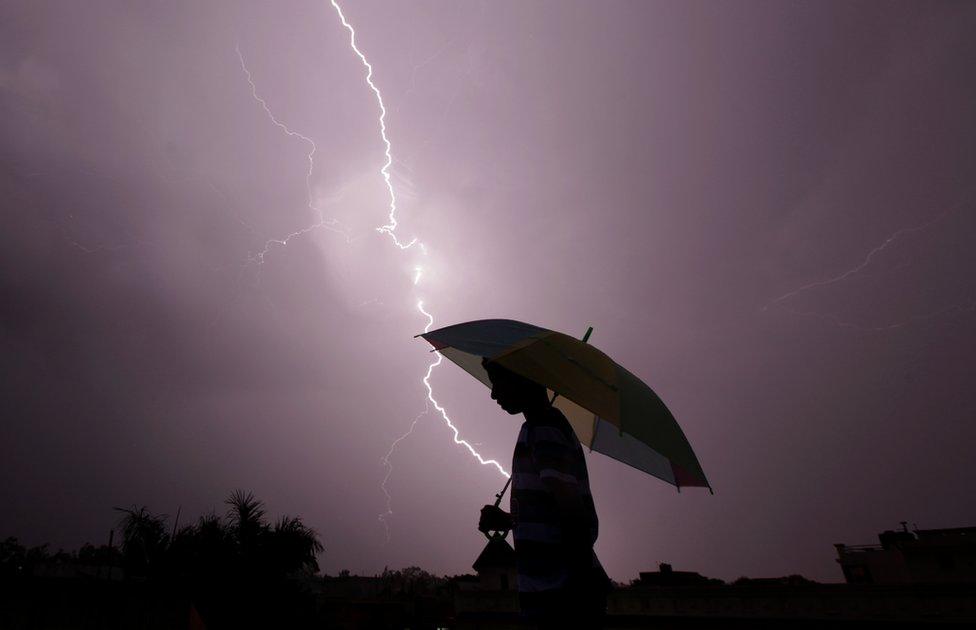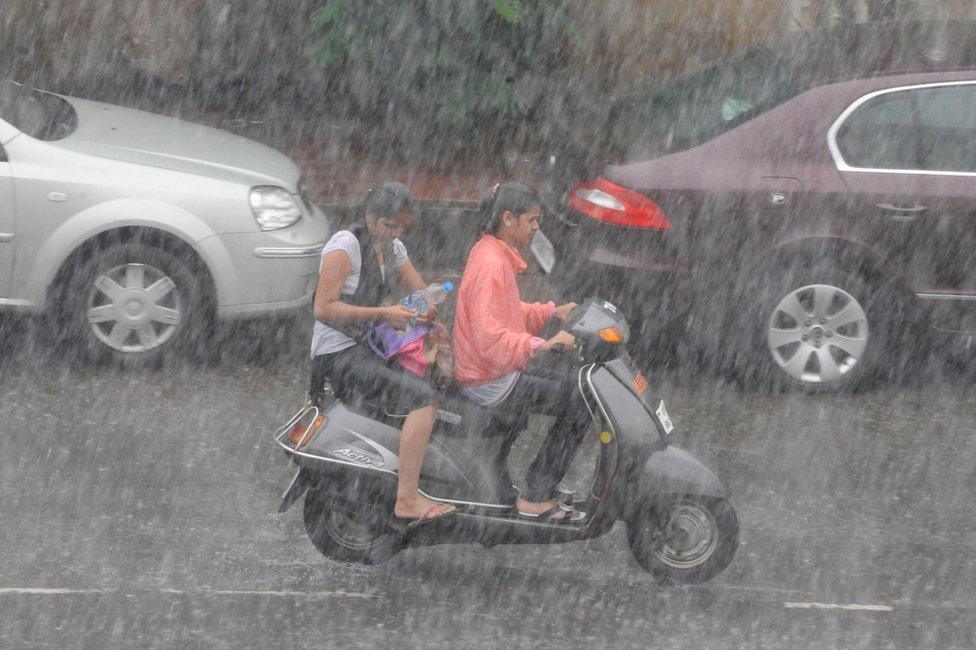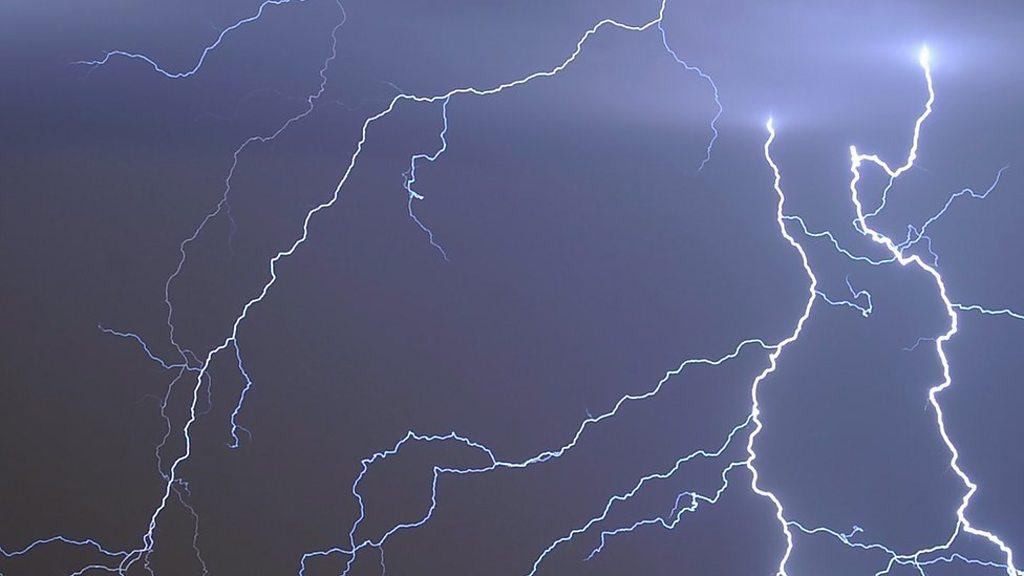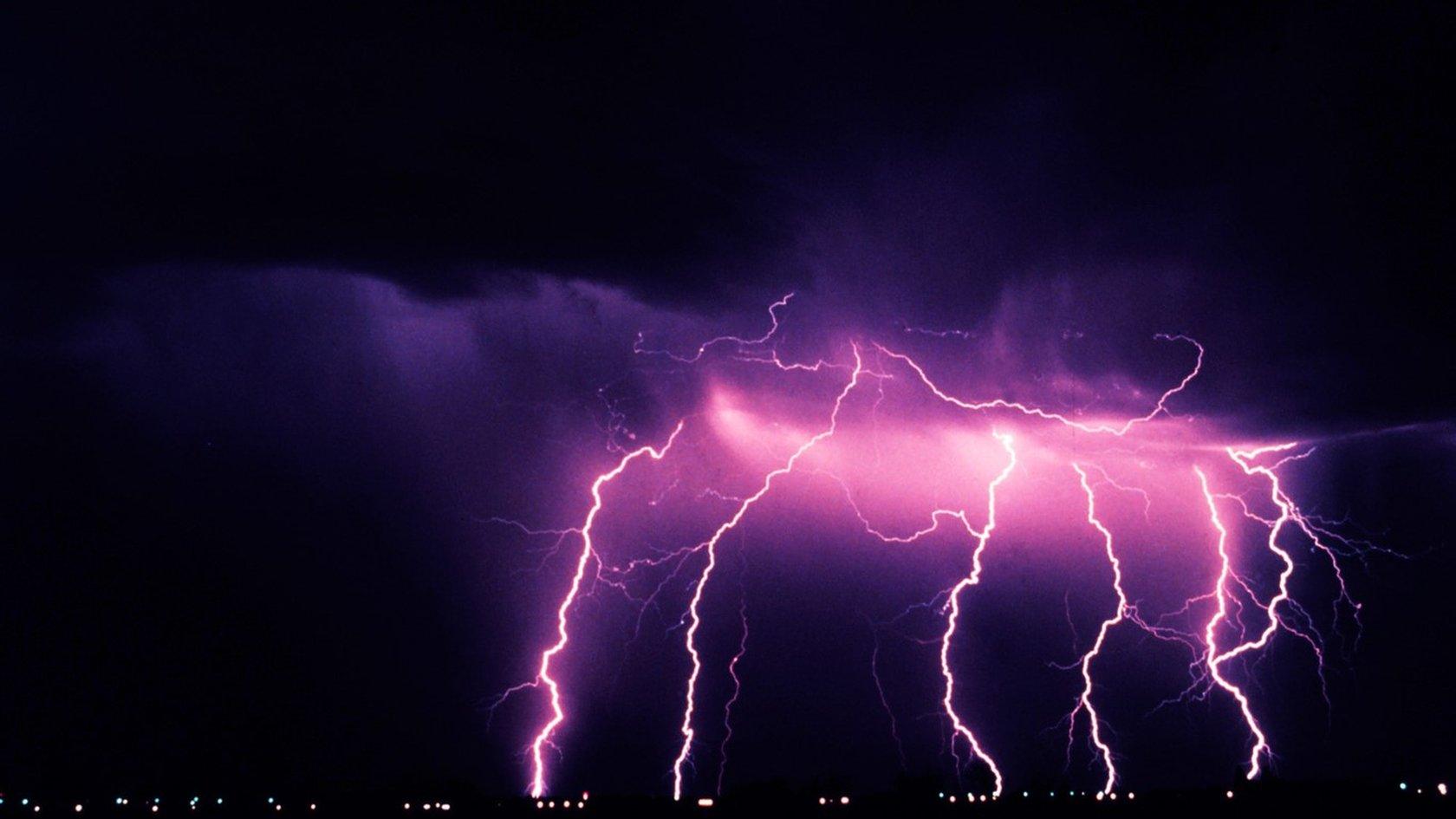India state records 36,749 lightning strikes in 13 hours
- Published

At least 2,000 people have died in lightning strikes in India every year since 2005
The southern Indian state of Andhra Pradesh recorded 36,749 lightning strikes in just a 13-hour period on Tuesday, officials say.
The number is unusually high and the result of "extreme weather patterns", according to the state disaster management authority.
Nine people, including a nine-year-old girl, have been killed in the state by lightning strikes since Tuesday.
Lightning strikes are common in India during heavy monsoon rains.
The season typically begins in June and lasts until September. However, this particular region usually sees increased lightning activity before the monsoon begins, Kishan Sanku, who runs the state emergency operation centre, told the BBC.
Tuesday's bout of lightning is being considered an anomaly because data from last year shows that there were some 30,000 lighting strikes throughout the entire month of May in the same region.
Some scientists believe that global warming will significantly increase the frequency of lightning strikes.
Why is there so much lightning?
The lightning strikes have been occurring along the northern coast of Andhra Pradesh, an area which often experiences heavy rains.
Although there is usually increased lightning activity in the region before the monsoon, this year cold winds from the Arabian sea collided with warmer winds from northern India and produced conditions that led to the formation of more clouds than usual, Mr Sanku said.
This increased the chance of lightning strikes.
What has made conditions particularly unique, he added, is that the cloud cover extended over 200km (124 miles).
"Usually it is in patches, around 15-16km," he said. "In our experience, this is very rare."

Lightning strikes are common in India during heavy monsoon rains
How common are lightning deaths in India?
At least 2,000 people have died in lightning strikes in India every year since 2005, according to the National Crime Records Bureau.
India's death toll from lightning strikes is far higher than that in developed countries such as the United States, where, on average, 27 people die from lightning strikes each year., external
The lack of a reliable warning system is often cited as one reason for the high number of deaths. Another is that a large number of people work outdoors in India compared to other parts of the world, which makes them more vulnerable.
But Mr Sanku says his office has made people more aware of the dangers. On Tuesday, they alerted district officials on messaging services WhatsApp and Telegram, and made announcements on television and radio warning people to stay indoors.
He says they also have a subscription-based alert for mobile phone users.
"But we are not able to alert the people working in the fields because they don't carry their phones with them."

Safety tips when lightning strikes
Seek shelter inside a large building or a car
Get out of wide, open spaces and away from exposed hilltops
If you have nowhere to shelter, make yourself as small a target as possible by crouching down with your feet together, hands on knees and head tucked in
Do not shelter beneath tall or isolated trees
If you are on water, get to the shore and off wide, open beaches as quickly as possible
Source: Royal Society for the Prevention of Accidents
- Published22 June 2016

- Published13 November 2014
